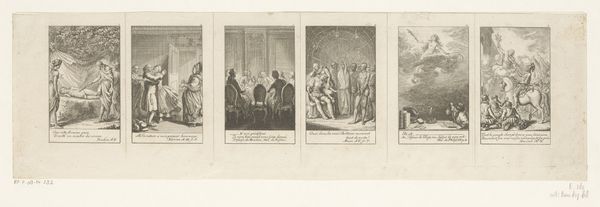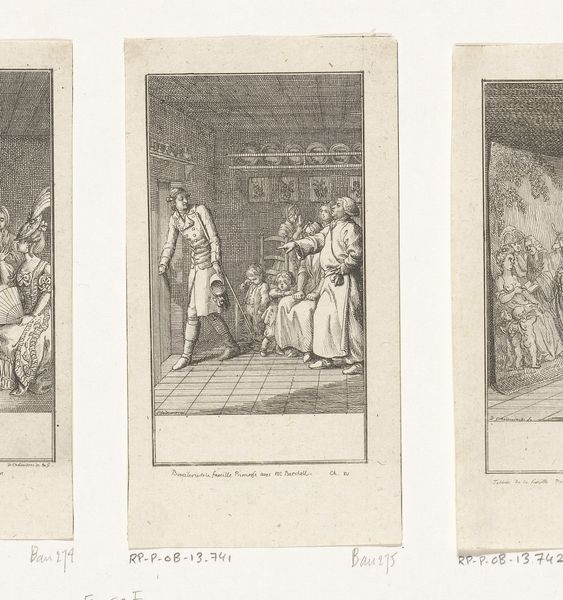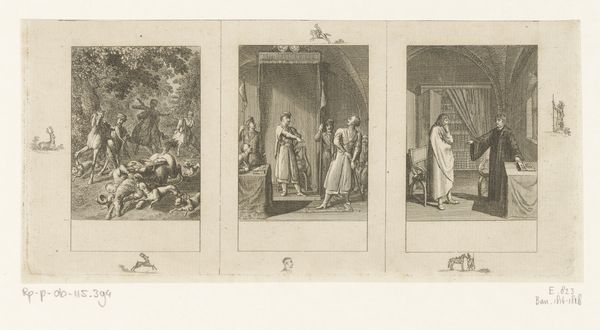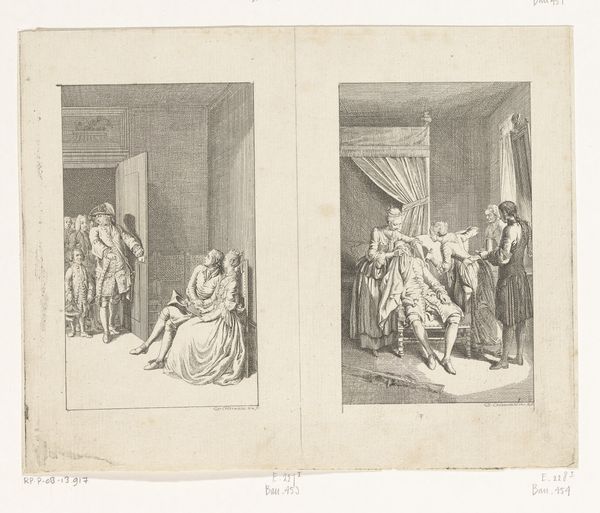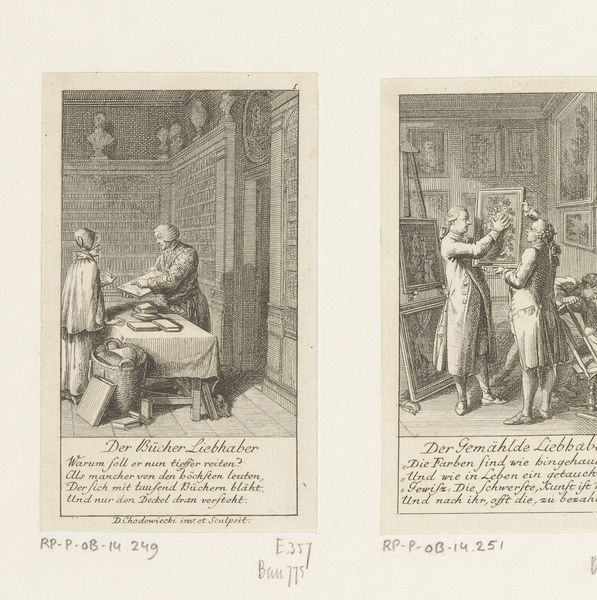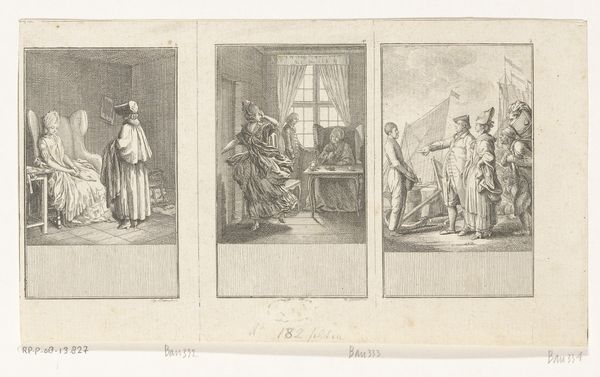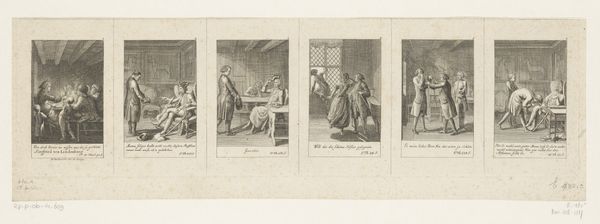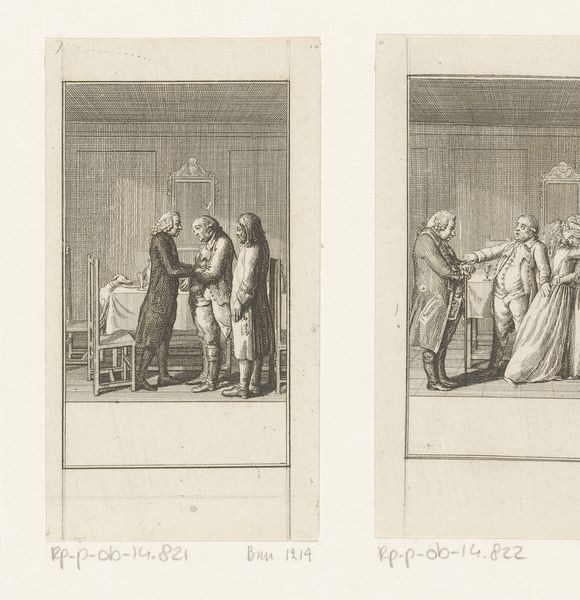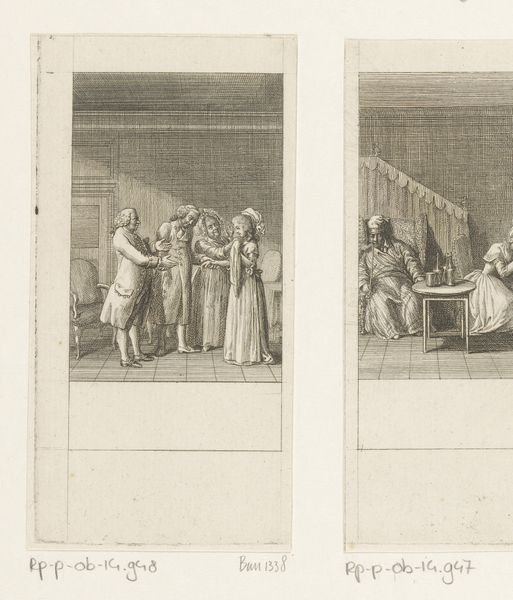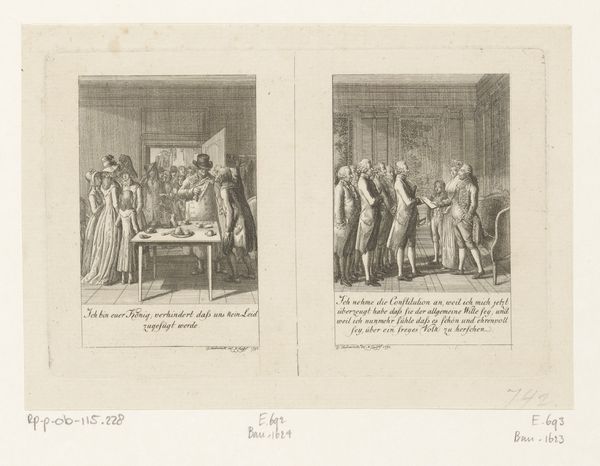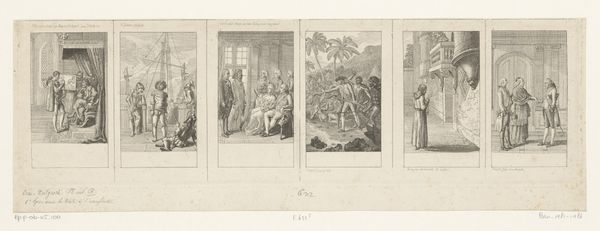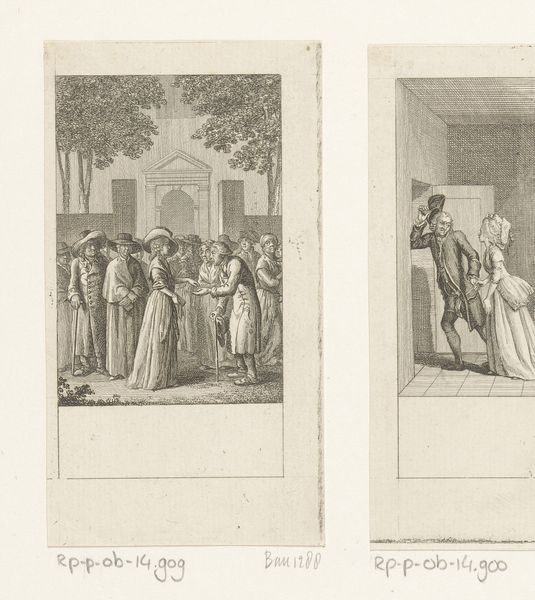
Dimensions: height 103 mm, width 239 mm
Copyright: Rijks Museum: Open Domain
Curator: Let’s turn our attention to “Four Scenes from the History of Blaise Gaulard,” created by Daniel Nikolaus Chodowiecki around 1775. It’s an engraving, so the detail is remarkable. Editor: It feels almost like a comic strip of the 18th century. Very concise. What's striking to me immediately is the display of social power within each scene. From the vulnerability in the initial panel to the implied violence outside, the dynamics are intense. Curator: Precisely. Chodowiecki was quite the social observer, using art to reflect on societal norms and institutions. "Blaise Gaulard," although fictional, likely served as a critique of social mobility and class structures of the era. Consider the Neoclassical style – everything is orderly, yet the scenes reveal potential chaos underneath. Editor: Absolutely. The second panel especially grabs me, the figure being whipped by figures hiding behind masks creates an unsettling balance between theatricality and cruelty. I also wonder about Blaise Gaulard. Does he embody a form of resistance against social injustices? Curator: It is tempting to interpret that way. Although we don't have direct confirmation from the artist, prints like these were distributed widely. Its political role should not be dismissed since, the act of disseminating a moralizing tale was a way of inserting an artist's point of view in the popular sphere. Editor: It brings into focus the question of how marginalized figures or groups find ways of navigating—or subverting—established orders. These weren’t just images; they were political acts that brought visibility and possibly offered agency, challenging accepted behaviors of society at that time. Curator: Indeed. Art during this period played an integral role in reflecting and shaping social attitudes, offering space for questioning, critique, and even reimagining power relations. Chodowiecki effectively captured not just images, but complex dialogues around power, virtue, and societal expectations through simple scenes. Editor: Thank you! Understanding that it's an engagement with the pressing concerns and challenges of that period deepens our appreciation. These miniature scenes tell a history on gender, ethics and moral questions.
Comments
No comments
Be the first to comment and join the conversation on the ultimate creative platform.
